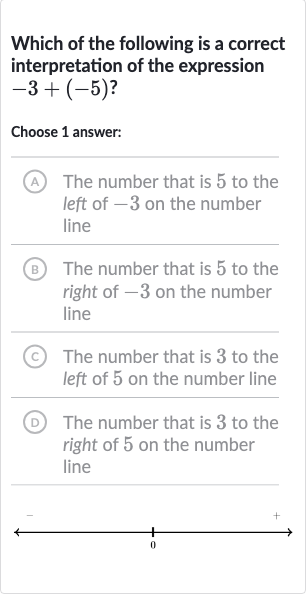AI tutor
Welcome to Bytelearn!
Let’s check out your problem:

Which of the following is a correct interpretation of the expression ?Choose answer:(A) The number that is to the left of on the number line(B) The number that is to the right of on the number line(C) The number that is to the left of on the number line(D) The number that is to the right of on the number line
Full solution
Q. Which of the following is a correct interpretation of the expression ?Choose answer:(A) The number that is to the left of on the number line(B) The number that is to the right of on the number line(C) The number that is to the left of on the number line(D) The number that is to the right of on the number line
- Understand the expression: Understand the expression.The expression involves adding two negative numbers together.
- Perform the addition: Perform the addition.Adding two negative numbers together means you are moving further to the left on the number line. So, starting at and moving units to the left gives us .
- Interpret the result: Interpret the result.The result of is , which is units to the left of on the number line.
- Match the result: Match the result with the correct interpretation.The correct interpretation of the expression is that it represents the number that is units to the left of on the number line.
More problems from Function transformation rules
QuestionGet tutor help
QuestionGet tutor help
QuestionGet tutor help
QuestionGet tutor help
QuestionGet tutor help
